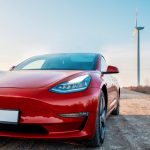Stellantis will open access to Tesla’s North American Charging System (NACS) for a selection of its battery-electric vehicles beginning in 2026. The strategic move will incorporate Jeep, Dodge, and other Stellantis brands into Tesla’s vast Supercharger network, with extensions planned for Japan and South Korea in 2027. Consumers of Stellantis’ upcoming electric models are expected to benefit from greater fast-charging options, addressing concerns about charging convenience for long-distance travel. This development reflects auto industry efforts to standardize charging and make electric vehicles more practical for a wider audience. A clear roadmap for launch and integration demonstrates Stellantis’ commitment to supporting customers as electric mobility advances.
Automakers have shown a growing trend toward adopting Tesla’s NACS to improve charging infrastructure accessibility. Earlier reports mentioned discussions between Stellantis and Tesla, but official timelines and regional deployment details were lacking. In recent months, other prominent car manufacturers have also announced compatibility with Tesla’s charging standard, further highlighting industry-wide movement to streamline the charging process. Stellantis’ latest update confirms its intention to match competitors’ infrastructure commitments and potentially increase consumer confidence in its electric offerings.
What will Stellantis’ NACS Initiative Offer Drivers?
Customers buying Jeep Wagoneer S, Dodge Charger Daytona, and select future models will gain access to over 28,000 Tesla Superchargers throughout five countries. By 2027, drivers in Japan and South Korea are also set to benefit from the expanded network. Stellantis plans to release details on adapters and network procedures for existing vehicles closer to launch, a step aimed at smoothing the onboarding process for current owners.
How Does Increased Charger Access Impact Electric Vehicle Adoption?
Enhancing public fast-charging options directly addresses one of the main concerns faced by potential electric vehicle customers: charging anxiety. Stellantis’ access to the Supercharger network is intended to alleviate these concerns and support more efficient long-distance journeys. The company highlighted its objective to provide “maximum freedom of choice for customers on their electrification journey.”
“Our commitment is to ensure a hassle-free charging experience for all Stellantis EV drivers,”
said Stellantis, further outlining its infrastructure strategy to attract more buyers.
Why Do Automakers Value the Tesla Supercharger Network?
Surveys such as the Zapmap 2025 report have rated the Tesla Supercharger system highly for ease of use, payment experience, and network reliability. Recent figures indicate Tesla now hosts over 1,100 open Supercharger devices in the UK, representing significant network growth. This established reliability and cost-effectiveness have become significant factors for carmakers seeking seamless solutions for their customers.
“Access to the Supercharger network will significantly expand our customers’ charging options,”
the company emphasized, reflecting the decision’s broader importance to future Stellantis EV owners.
As automakers broaden their charging partnerships and align with established networks, the potential for greater electric vehicle adoption increases. For car buyers, practical considerations such as charging locations, speed, and accessibility remain deciding factors. Stellantis’ integration of the NACS and Supercharger network is likely to encourage more customers to consider EVs, especially those prioritizing travel efficiency and range confidence. Industry observers will monitor how this collaboration influences other automakers’ charging strategies. As more brands converge on similar platforms, consumers may find it easier to navigate charging infrastructure, potentially accelerating the shift to cleaner transportation solutions.










